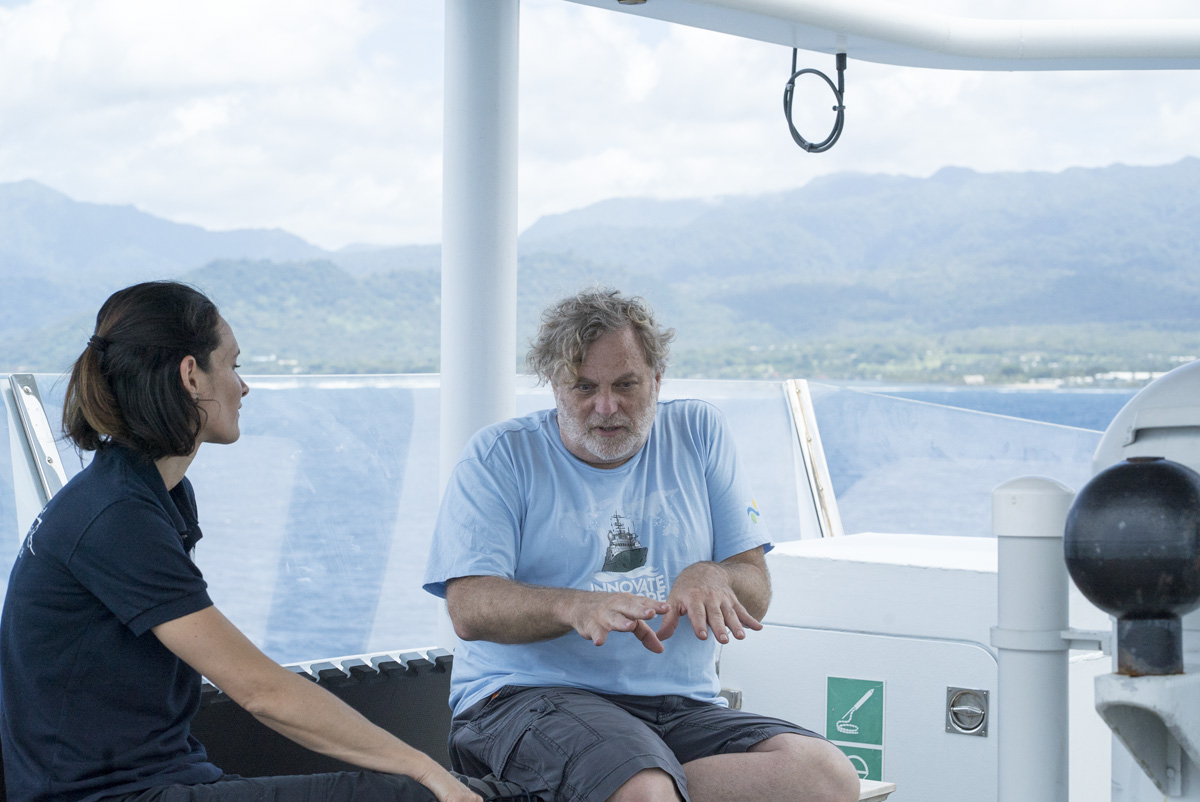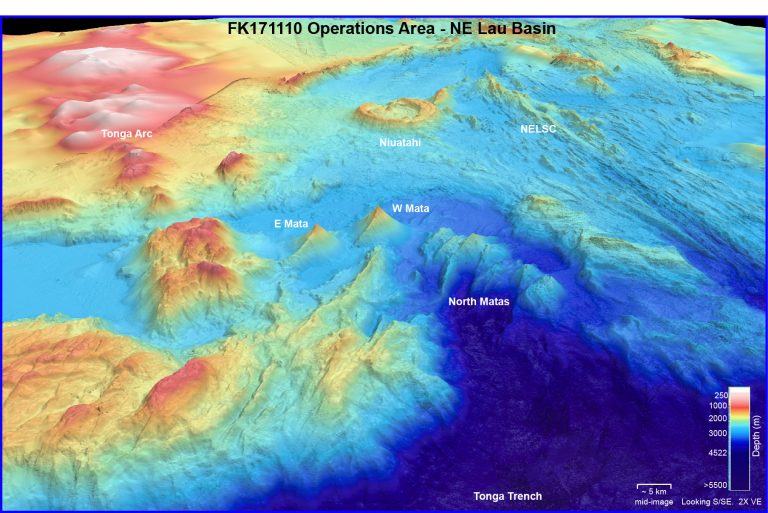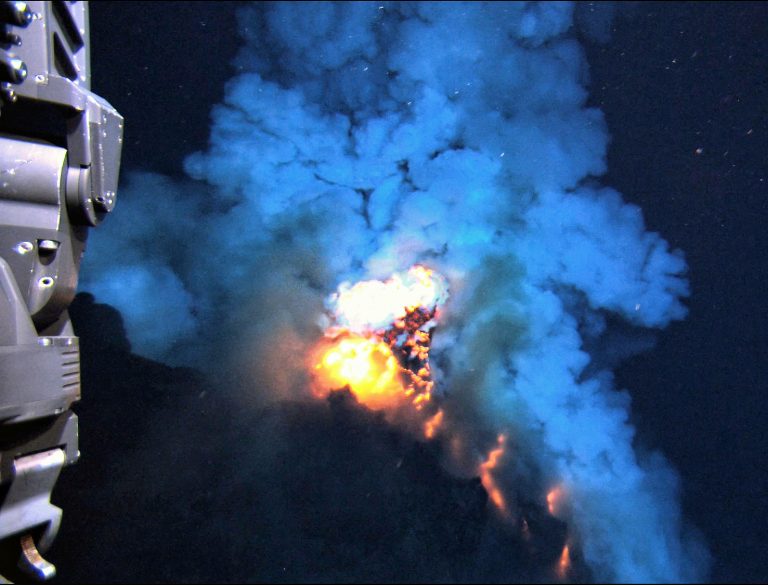Topic
Underwater Volcanoes

Underwater Fire Essentials
Volcanic activity is enthralling, but when observed deep below the seafloor from a Remotely Operated Vehicle, like SuBastian, it has an additional mysterious and dream-like quality. Over the coming weeks, Falkor will be sailing over one of the most active underwater volcano sites in the world, the Mata Volcano group.
During that period, discoveries are bound to happen. The team keeps their fingers crossed for a deep sea eruption, an event so rarely seen, it has only been witnessed twice before. The possibilities are wide open, and each one of the scientific fields taking part in this expedition comes fueled by its own particular questions. Perhaps a good place to start are the basic ones.
Where Are We, and Why?
Falkor’s Underwater Fire expedition is looking at a group of submarine volcanoes in the Northern part of the Kingdom of Tonga. What is interesting about them is that they are unusually active, they are small and also very close together. The objective is to understand how these volcanoes formed, when they did, if they form in sequence or at the same time, how does the way in which they formed affect their kind of hydrothermal circulation and the type of organisms that live at the hydrothermal vents. The scientific team aims to understand them as a group, something no one has tried in a submarine setting before.

Why is it important to understand submarine volcanic eruptions?
Eruptions are exciting and interesting, but they are also potentially dangerous. We have very limited abilities to predict the behavior of volcanic eruptions, even after studying past events. Most of the volcanic activity on the planet occurs in the oceans, not on land. We are very familiar with the great eruptions that happened at the big volcanoes of the world on land, but we know very little about what happens below the sea surface. As we study further, we become more interested in submarine volcanism in order to understand how it happens, what sort of hazards it presents, what types of changes happen on the seafloor, how it affects the chemistry and ecology of the seawater, and how it impacts ocean currents in the regions of the volcanoes. There are many reasons to want to understand not only volcanism itself, but the role it plays in affecting the oceans.
Why is it important to study several volcanoes as opposed to just one?
Humans have known about volcanoes on land for thousands of years, but the first idea of a submarine volcano came in the late 1900s, which puts this scientific field very far behind in terms of understanding how deep-sea volcanism occurs. Both on land and in the sea, there are many places with large volcanoes that are very far apart from each other; those volcanoes are studied one at a time. Yet there are a few places where we find several small volcanoes next to each other, and scientists believe that they do not operate independently, hence they must be studied as a group in order to understand the behavior of one or another. The Underwater Fire team plans to take advantage of the local volcanic differences to help fill in the blanks in understanding of the overall process of volcanism, both on land and at sea.

What is the difference between an underwater volcano and a hydrothermal vent?
Volcanoes, whether they are on land or at sea, are usually geological features that form through one or more volcanic eruptions; repeated emissions of either lava, gas or small particles called pyroclast. A hydrothermal vent can be on land or at sea, but on land we call them fumaroles. They are places where either magmatic gas, heated vapor or sometimes fluid water comes out of the volcano. They don’t always occur at the same location where magma comes out. They’re usually associated with small faults or cracks.
Will we witness an underwater eruption?
So far there’s only been two places in the deep ocean where scientists have observed an eruption while it was happening. If we can have a third opportunity, we are prepared to take advantage of it. The experts believe we have a fifty percent chance that West Mata will be going off during the expedition, and so far this is the only place globally where scientists have seen lava flowing across the deep seabed.
